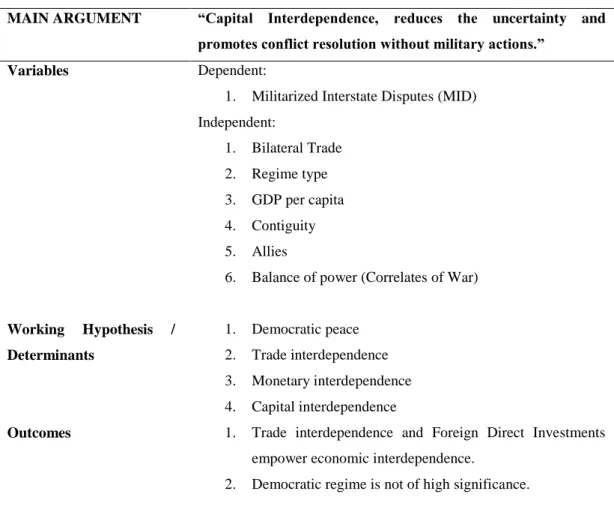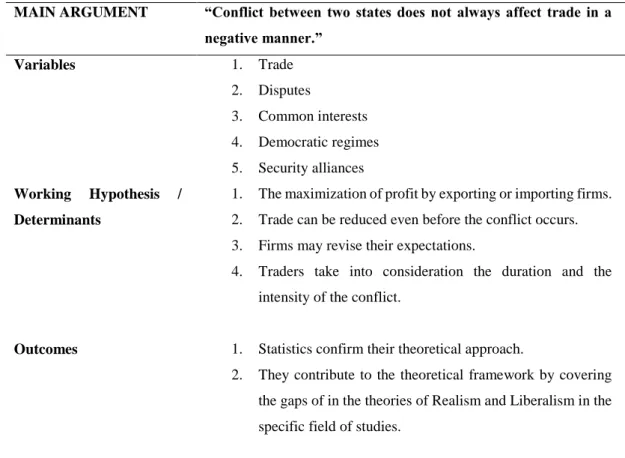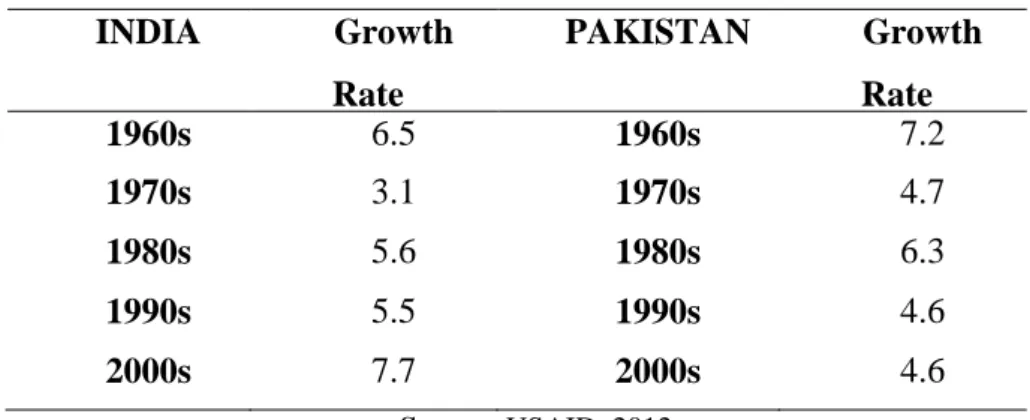Secondly, I would like to thank lecturer Efstathios Fakiolas and professor Angelos Kotios, from the University of the Peloponnese and the University of Piraeus, respectively, for their crucial comments, observations and guidance. I would also like to thank John O'Shea for editing the English version of the text.
INTRODUCTION
- Introductory Note: The Aim of the Thesis
- Reasons for Developing the Thesis
- The Originality of the Thesis
- Methodology
- Structure of the Thesis
So my dependent variables are the relative benefits and the value of the disputed area. The third chapter (Chapter 3) consists of definitions of terms and literature review related to the issue of economic interdependence and national security.
THEORIES OF INTERNATIONAL POLITICS
- Introduction
- Realism’s Basic Assumptions
- The comparative advantage of Realistic theory
- Realism vs Liberalism
- Realism vs Constructivism
- Realism vs Marxist theories
- Conclusions
More specifically, according to Embedded Realism, guaranteeing national security and national interest remains the dominant factor that determines state behavior. The struggle for power is continuous, promoting the national interest for the survival of the state itself within the international system.
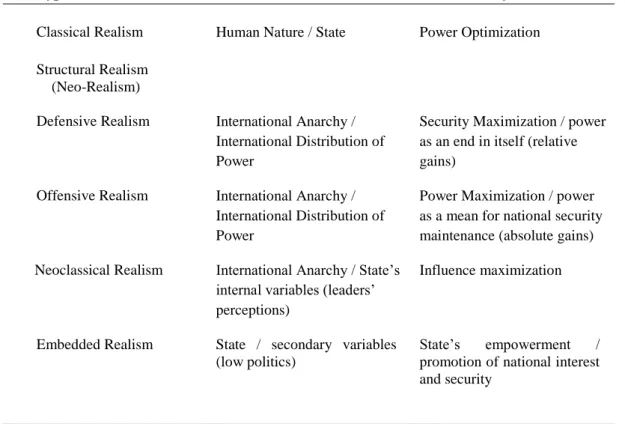
DEFINITIONS OF TERMS AND LITERATURE REVIEW
Introduction
- Economic Interdependence
- Balance of Power
- National Security
- Conclusions
Third, it is important to distinguish between the subjective and objective existence of the balance of power. In the first function, the balance of power prevented the transformation of the international system "by conquest into a universal empire."
Literature Review
- Introduction
- The discussion on the relationship between economic interdependence and interstate conflict…60
As for the first, Liberman focuses on the magnitude of the threat. On the other hand, when the dominant position of the United States was threatened, foreign policy was used to secure national economic goals. According to Mastanduno, positive economic sanctions provide benefits for changing the political behavior of the target state.
Realists, on the other hand, argue that trade between adversaries causes conflict because of the existence of relative gains. On the other hand, in some dyads, the level of trade started to increase after the start of the war. The higher the level of relative determination, the greater the likelihood of conflict escalation.
In addition, to explain the effect of conflict on trade, they add an important factor, namely the causal mechanisms of the conflict.

FRAMEWORK OF ANALYSIS
Constructing the Framework of Analysis
By the dignity of the disputed territory I mean the importance of the disputed territory for the economic power and exercise of influence of the state, to define the relative gains that result from it. IV). As for the military variables, the aim is to demonstrate the impact of asymmetric economic interdependence on the formation of the national security of the threatened state. In accordance with the analytical framework, the two main variables determining economic interdependence between two states in conflict are the relative gains and the dignity of the disputed territory.
The first component confirms and extends Grieco's theory of the consequences of economic interdependence in relative gains, while the second is the value of the contested area that defines these gains. As stated in the analytical framework, this important aspect is directly related to both economic interdependence and the value of the disputed area, as it reveals the level of national security of the country at risk.
THE INDIA – PAKISTAN CONFLICT
The initiation of the Conflict
Both rivals, without making any progress towards resolving the Kashmir conflict, began a sharp escalation of the arms race by simultaneously conducting nuclear tests. In addition, suicide attacks in Kashmir and Delhi in 2001 caused a serious increase in the number of troops on both sides of the India-Pakistan borders. In 2007, dialogue continued in the shadow of bombings, with new issues such as reducing the number of nuclear and ballistic missiles, and in 2008 India and Pakistan agreed on bilateral trade routes as they already had a joint framework agreement on the gas pipeline. project with Turkmenistan and Afghanistan.
Two years later, talks started again between the two adversaries and in 2013 they met in New York at the UN General Assembly and agreed to promote a de-escalation of the conflict in the disputed area of Kashmir, as well as for the release of trucks with commercial goods. which was forbidden by both sides. 158 tension in the area will decrease to promote a peaceful resolution of the conflict.
The Threatened State
The other factors (proximate power, aggregate power and threatening statements) serve to strengthen the initial and most valuable factor, which is already mentioned, for defining the threatened state. Not only is Pakistan a revisionist country seeking to change the status quo, it is also a proximate power as it borders a disputed area and its statements are anything but friendly as it frequently threatens India with nuclear war (Daily Mail The National Interest, 7 August 2015). Therefore, taking into account the above, we conclude that India is a threatened country, as Pakistan's behavior meets the objective factors that define a threat, according to the analytical framework.
Weighing Relative Gains
- Economic Power and Asymmetric Economic Interdependence
Primary Indicators of Economic Power
GDP growth is also an important indicator because it is complementary to the previous indicator, current GDP, and shows the variation in the state's economic power. For the years between 1991 and 2001, Pakistan's tariffs were higher than India's, but from 2008, India had higher tariffs than Pakistan. Foreign exchange reserves are also an important indicator of the state's economic power, as it shows the state's economic power and its abilities to react to protect its currency and its economy.
In addition, foreign exchange reserves as a percentage of imports determine absolute (or relative, if different state) profits. In summary, it can be said that India has more economic power than Pakistan as the country is in a better place when it comes to the key indicators of economic power such as GDP, GDP growth and foreign exchange reserves.

Indicators of Economic Interdependence
On the other hand, Pakistan's trading partners include India, which is in fifth place with 2,472.4 million. What needs to be mentioned at this point is that Pakistan's imports from India start to increase from 2006 onwards because at that time both the adversaries signed their first trade agreement dealing with non-manufacturable raw materials. at the local level. On the other hand, as far as bilateral economic agreements are concerned, the lack of cooperation between the two rivals is also noticeable.
Pakistan's trade agreements, on the other hand, only include countries such as Afghanistan, Malaysia, China, Sri Lanka, Iran, Mauritius and Indonesia, and it is also a member of Regional Trade Agreements such as the South Asian Free Trade Agreement and the South Asian Free Trade Agreement. . Association for Regional Cooperation (SAARC) Agreement on Trade in Services (USAID, 2012). However, the most significant point showing the asymmetric economic interdependence is the fact that India is Pakistan's fifth largest import partner with ever-increasing figures, as well as trade agreements between them for raw materials that Pakistan cannot produce locally. .
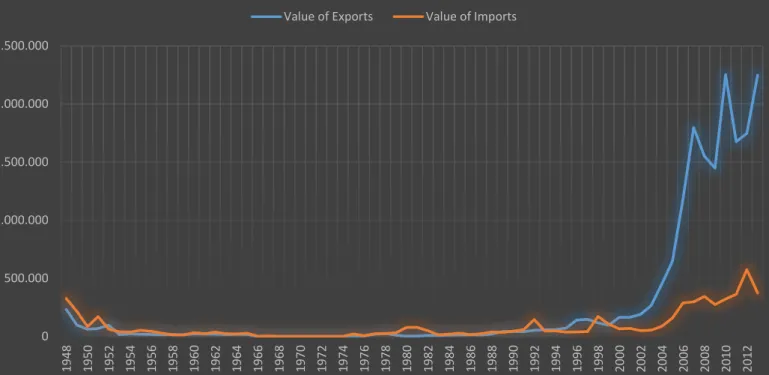
Bilateral Military Relations
Right after India's first nuclear test in the 1970s, Pakistan, on the other hand, began its nuclear weapons program. As mentioned in the analytical framework, it is important to take into account the configuration of the conflict by focusing on the number of violations in the disputed area caused by the aggressive side against the threatened state, which in this case is India. With regard to the conflict in Kashmir, the existing data are insufficient and cannot provide a general picture of the configuration of the conflict because, although the data refer to ceasefire violations, they nevertheless only cover the period from February 2013 to July 2013.
Therefore, we consider the timeline of the conflict, as can be seen in Figure 4. Last but not least, neither of the two adversaries belongs to any military alliance and to measure the escalation and de-escalation of the conflict , we focus on the timeline of the conflict, as there are insufficient data, which cannot justify the main argument of the thesis that asymmetric economic interdependence is not a balancing factor of power and does not promote peace.
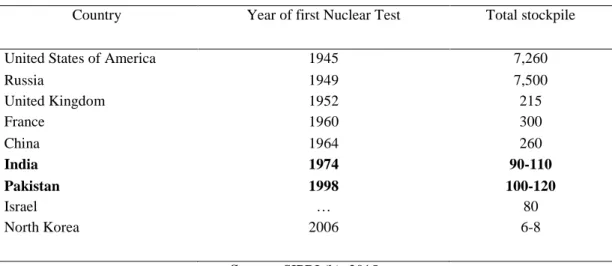
The Worthiness of the Disputed Area
- Conclusions
According to the United States Senate Foreign Relations Committee “With a population already exceeding 1.1 billion people and projections showing continued growth to over 1.5 billion by 2035, India's demand for water is growing at unprecedented rates. According to the United States Senate Foreign Relations Committee, “Of all the rivers that flow into Pakistan, the Indus is the most essential because of its importance to the agricultural sector. According to the United States Senate Foreign Relations Committee "[…], the cumulative effect of these projects could give India the ability to store enough water to limit supplies to Pakistan at crucial times in the growing season". (United States Senate Foreign Relations Committee, 2011:9).
However, according to the US Senate Foreign Relations Committee, "The treaty quantifies the amount of water both countries will receive from these rivers and serves an important function by governing the use of the rivers for hydroelectric projects. First, the water issue is the occasion and not the cause to the conflict between India and Pakistan.

THE GREEK-TURKISH CONFLICT
- The initiation of the Conflict
- The threatened state
- Weighing the Relative Gains
- Economic Power and Asymmetric Economic Interdependence
- Secondary Indicators of Economic Power
- Conclusions
In addition, to put more pressure on Greece, Turkey became more aggressive, ignored Greek sovereignty over the Aegean Sea and began looking for oil in areas on the Greek continental shelf. After the Turkish invasion of Cyprus, Greece decided to increase the number of troops on the Greek islands, which are close to the Turkish coastline. On the other hand, Turkey had already extended its territorial waters to 12 nautical miles from its coast in the sea area of the Black Sea and Cyprus (Veremis, 2003).
According to the analytical framework, in order to define which of the two competitors has the greater economic power, it is critical to consider not only the primary but also the secondary indicators of economic power. More specifically, exports as a percentage of GDP indicate which of the two competitors has succeeded in increasing its power and, consequently, its relative profits vis-à-vis the other.

THE BRITISH-SPANISH CONFLICT
The Initiation of the Conflict
The Threatened State
Weighing Relative Gains
- Economic Power and Asymmetric Economic Interdependence
Secondary Indicators of Economic Power
- Conclusions
Exports as a percentage of GDP is also an important indicator of a country's economic power, as it shows which of the two rivals has been able to increase its power and, consequently, its relative profits compared to the other. In addition, for a more comprehensive view of the trade balance, it is also important to take into account how the trade relations of the two rivals with developing countries developed (Papadimitriou and Pistikou, 2015b). Second, from the beginning of the conflict to the last decade, India increased its growth rate and its foreign exchange reserves more than Pakistan.
Consequently, weak bilateral commercial relations and India's rise in economic absolute gains did not affect the configuration of the conflict for the better. The balance of trade must be considered as a secondary factor of economic power, because this indicator shows the international transactions of the state, since it is the largest component of the balance of payments.
CONCLUSIONS



